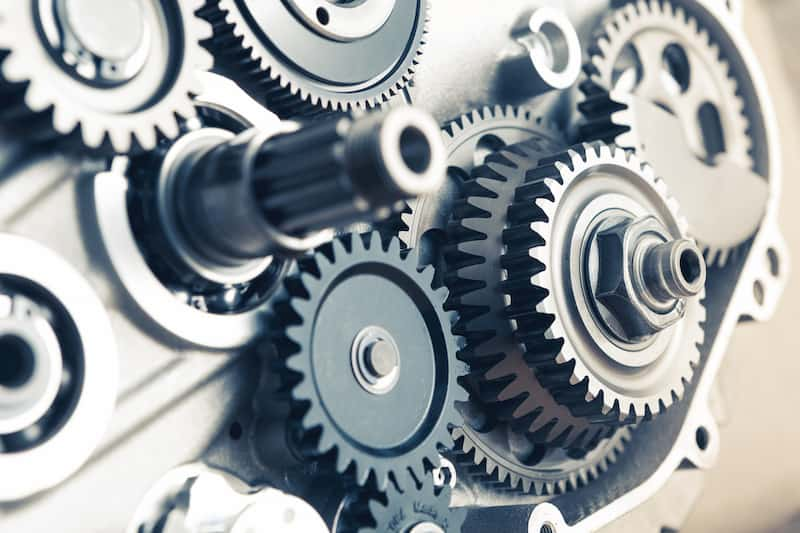How Gears Work and What They Do ?
Have you ever wondered how machines work so smoothly and efficiently? How your car is able to accelerate and brake so smoothly? Or how your bicycle is able to climb steep hills with ease? The answer lies in one of the most important inventions of all time: gears.
Gears are an essential component of many mechanical systems. They transmit power and motion between two rotating shafts, allowing them to work together in harmony. In this article, we'll explore the fascinating world of gears, how they work, and their many uses.
What are Gears?
A gear is a mechanical component that transmits torque and motion between two rotating shafts. It consists of a toothed wheel that meshes with another toothed wheel or a chain, belt, or rack. When one gear rotates, it causes the other gear to rotate in the opposite direction at a different speed, depending on the size of the gears and the number of teeth they have.
Gears come in many shapes and sizes, from tiny watch gears to massive industrial gears. They can be made of various materials, including steel, brass, plastic, and even wood.
How Do Gears Work?
The operation of gears is based on the principle of torque multiplication. Torque is the rotational force that is applied to a shaft or a gear. When two gears mesh, the torque is transmitted from the driving gear to the driven gear, causing it to rotate.
The ratio of the number of teeth on the driving gear to the number of teeth on the driven gear determines the speed and direction of rotation of the driven gear. For example, if the driving gear has 20 teeth and the driven gear has 40 teeth, the driven gear will rotate at half the speed of the driving gear but with twice the torque.
Gears can also change the direction of rotation of a shaft. By using a pair of gears with the same number of teeth but rotating in opposite directions, the rotation of a shaft can be reversed.
Types of Gears
There are several types of gears, each with its unique characteristics and applications. Here are some of the most common types:
Spur gears: These are the most common type of gears and are used in a wide range of applications, from watches to industrial machinery. They have straight teeth and are mounted on parallel shafts. Spur gears provide a smooth and efficient power transfer but are prone to noise and wear.
Helical gears: These gears have angled teeth that are cut at an angle to the gear axis. This results in a smoother and quieter operation than spur gears but at the cost of efficiency. Helical gears are used in applications that require high precision and low noise levels, such as automotive transmissions.
Bevel gears: These gears are used to transmit power between shafts that are not parallel to each other. They have conical-shaped teeth and are mounted on intersecting shafts. Bevel gears are commonly used in differential gears in automobiles.
Worm gears: These are used when high gear reduction is needed, and space is limited. Worm gears consist of a worm screw and a worm gear, and they transmit power at a right angle. They have high efficiency but low torque capacity and are commonly used in winches and hoists.
Applications of Gears
Gears are used in a wide range of applications, from simple toys to complex industrial machinery. Here are some of the most common uses of gears:
Automotive transmissions: Gears are an essential part of automotive transmissions, allowing the engine's power to be transmitted to the wheels at different speeds.
Clocks and watches: Gears are used in mechanical clocks and watches to regulate the movement of the hands and keep accurate time.
Industrial machinery: Gears are used in various types of industrial machinery, including conveyor belts, printing presses, and manufacturing equipment. They are used to transfer power between different parts of the machine and to regulate the speed and torque of the rotating parts.
Robotics: Gears are used extensively in robotics, where they are used to transfer power and motion between different parts of the robot. They are used to control the movement of the robot's arms and legs, as well as the rotation of its joints.
Bicycles: Gears are an essential part of bicycles, allowing the rider to adjust the pedaling effort needed to climb hills and maintain speed on flat terrain.
Wind turbines: Gears are used in wind turbines to transfer the rotational energy of the blades to the generator, which produces electricity.
Aircraft engines: Gears are used in aircraft engines to transfer power from the turbine to the propeller, allowing the plane to move forward.
Conclusion
Gears are the unsung heroes of our daily lives. They play a crucial role in a wide range of machines and systems, enabling them to work smoothly and efficiently. From simple toys to complex industrial machinery, gears are an essential part of our modern world.
Understanding how gears work and their various applications can help us appreciate their importance in our daily lives. Whether you're driving a car, riding a bike, or using a machine, gears are working behind the scenes to make it all possible.
Labels: automobile, Interesting, Technology


0 Comments:
Post a Comment
Subscribe to Post Comments [Atom]
<< Home